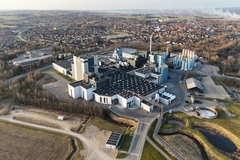
- Industry news
Industry news
- Category news
Category news
- Reports
- Key trends
- Multimedia
Multimedia
- Journal
- Events
- Suppliers
- Home
- Industry news
Industry news
- Category news
Category news
- Reports
- Key trends
- Multimedia
Multimedia
- Events
- Suppliers
EFSA Calls for Industry Data to Help Develop Safety Assessments for Additives

EFSA is encouraging any interested parties and stakeholders to submit relevant information (published or unpublished).
19 Mar 2012 --- EFSA is calling for scientific data on certain food additives to assist it in developing safety assessments.
EFSA is encouraging any interested parties and stakeholders to submit relevant information (published or unpublished).
National food authorities, research institutions, academia, food business operators, and other stakeholders are invited to submit information on the selected food additives relevant to the specific areas indicated below:

- Miscellaneous food additives that are permitted in the EU and belonging to several functional classes – deadline 15 August.
- Montan acid esters (E 912) – deadline 1 June.
- Shellac (E 904) – deadline 1 June.
Call for scientific data on miscellaneous food additives permitted in the EU and belonging to several functional classes.
According to regulation, all food additives permitted in the EU before 20 January 2009 will be subject to a new risk assessment by EFSA. The programme for the re-evaluation of EU permitted food additives has been set up by Commission Regulation (EU) No 257/2010.
EFSA say that In order to ensure an effective re-evaluation, it is important that EFSA acquires from interested parties all relevant data (published or unpublished) for the re-evaluation of the selected miscellaneous food additives. These data will be considered for the EFSA Opinions/Statements on the food additives which will be issued in the coming years.
The purpose of this call for data is to offer all interested parties and stakeholders the opportunity to submit any available documented information (published or unpublished), relevant to the specific areas indicated in the following section.
National food authorities, research institutions, academia, food business operators, and other stakeholders are invited to submit information on the selected food additives relevant to the specific areas indicated below:
- Specifications for the finished food additive (e.g. purity and particle size and particle size distribution where appropriate).
- Information on the manufacturing process, including purification and preparation of the product to be commercialised and analytical/production controls, relevant to their use as food additives.
- Analytical methods available for determination of the food additive in food and beverages.
- Toxicokinetic and toxicity data (acute, subchronic and chronic toxicity; carcinogenicity; genotoxicity; reproduction and developmental toxicity; allergenicity, etc.) and any other information relevant to their safety assessment.
Interested parties are invited to contact EFSA for further clarification or to submit data: foodadditives@efsa.europa.eu










